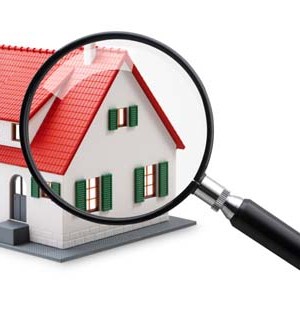- 4 Unexpected Things I’ve Learned From Buying My First Mobile Home Park
- How Ironic: America’s Rent-Controlled Cities Are Its Least Affordable
- U.S. homes are still a bargain on the international market
- Getting The Best Possible Quality Photos On MLSs and Syndicated Sites
- Home buyers in these markets have the upper hand
Ultimate Guide to Analyzing Rental Properties

Let me ask you a question: how long does it take you to pick out your clothes in the morning?
I bet it takes longer than most people will spend doing the math on their next real estate investments. I just don’t get it. People think the best deals are done on “intuition” and just buy something because it feels right.
Ugh. Please people!
I’ve said it before numerous times: If you don’t have the right math going into a deal, you’ll never get the right profit coming out of it. (Tweet This!) That deal you thought was incredible will turn out to be a thorn in your side for years to come and you’ll join the ranks of the millions who have “tried” real estate only to fail.
This is why I harp so often on getting a firm understanding of the math when buying an investment property.
I don’t care if you are buying your first or 100th property – you need to understand and do the math.
That is my ultimate goal with this post: to help you learn to analyze a real estate deal so you can make the best investment possible.
Below I’m going to walk you through the math I use to analyze a rental property, step by step. Please, if there is one post this year you read carefully and don’t skim: let it be this post!
How to Analyze a Rental Property
There are several primary factors I look at when analyzing a rental property, but the two most important are:
- Cash flow and
- Appreciation.
Cash flow is simply the money left after all the bills have been paid.
Appreciation is the equity gained as the property value increases.
There are not a lot of great ways to estimate future appreciation without a crystal ball, so I generally choose to focus on the cash flow. After all, I am a buy and hold investor and I assume any appreciation is “icing on the cake” and not the goal.
So I’m going to focus this section on analyzing cash flow. Let’s get started.
What is Cash Flow?
So, as I mentioned earlier, cash flow is the money left over after all the bills have been paid. This is a simple enough definition, but it gets a lot of people in trouble. You see, technically, cash flow is:
Income – Expenses = Cash Flow.
Okay, great. HOWEVER… where people tend to screw things up is the definitions. You see, income may include more than just the rent, and expenses will include more than just the mortgage.
Let me give you a BAD example of calculating cash flow. You might say, “The mortgage is $800 per month and the property will rent for $1,000 per month – so my cash flow would be $200 per month.”
False.
You see – you forgot about a lot of other expenses, including:
- Taxes
- Insurance
- Flood Insurance (if needed)
- Vacancy
- Repairs
- Capital Expenditures
- Water
- Sewer
- Garbage
- Gas
- Electricity
- HOA Fees (if needed)
- Snow Removal
- Lawn Care
- Property Management
- and more.
Now, some of these items are easy to calculate because you can simply call up someone important to find out about the cost. For example:
Taxes – Call your local county or look online at the county assessors page.
Insurance – Call your insurance salesman and ask for a quote.
Flood Insurance (if needed) – Same as above.
Water – Call your local water department.
Sewer – Call your local water or sewer department.
Garbage – Call your local trash provider.
Gas – Call your local gas company.
Electricity – Call your local electric company.
HOA Fees – Call the HOA president or hotline.
Snow Removal – Ask local landlords what they pay or call a snow removal company.
Lawn Care – Ask local landlords what they pay or call a lawn care company for a quote.
Keep in mind, not all of these will apply to every property (or tenants may pay their own expenses) and some properties will contain more expenses than I’ve listed here. Don’t get overwhelmed though – the more properties you look at in your local area the more you will understand what the “normal” expenses are.
Now, the numbers we just looked at are fairly easy to determine, but other numbers are more difficult to determine, like the vacancy, repairs, capital expenditures, and property management. But just because these numbers are difficult to nail down doesn’t mean we shouldn’t include them. Instead, we just need to use “averages.” And for that, we look at those numbers as a percentage and translate those percentages into dollar amounts. Let’s look at a few of the most common:
Vacancy: Properties are usually not rented 100% of the time; tenants move on and your property will likely sit vacant for extended periods of time. The length of time will depend on your local area and how good you are at filling those vacancies so I can’t give you an absolute number. If you are unsure, try talking with some local property management companies to see what their typical vacancy rate is.
Once you know the vacancy rate, as a percentage, you can break down the percentage into a monetary amount. For example, if a property rents for $1000 per month, and you believe the property will have a 5% vacancy rate, you simply take $1,000 x .05 to get $50. This is the amount you will want to include for your vacancy expense each month.
Repairs: Repairs are difficult to estimate because there are a lot of variables that come into play. A house that is 90 years old will likely have significantly more repair costs than a house built last year. A recently rehabbed house will also likely have fewer repairs needed than a home untouched for decades. Therefore, when looking at the cost of repairs, you will need to look at the property itself to determine how much you should allocate for repairs. Personally, I like to assume between 5% – 15%, depending on the condition and age of the property.
Keep in mind, these is a percentage averaged out over a long period of time, so it doesn’t mean that every month you can expect 5%-15% of the rent to be spent in repairs. You may go 6 months without a single repair and then get hit with a $1,500 water leak. You just never know.
Capital Expenditures: Also known as “CapEx” are those expensive “big ticket” items that need to be replaced every so often, but not every month or year. This could include roofs, appliances, driveways, plumbing systems, or any other large item you should be budgeting for. Many people ignore the CapEx in their analysis- which I feel is a mistake. After all, if you were to earn $100 per month in cash flow for 10 years ($12,000) and then needed to put on a new roof for $12,000… what did you really accomplish in those 10 years?
Like repairs, CapEx is difficult to estimate because it depends on the condition and age of your property. However, you can sit down and estimate how many years a roof will last, how many years an appliance will last, what the condition of your plumbing is, what a new driveway will cost, etc – and divide it out by the number of years. I generally like to assume the same number, between 5% – 15%, for my CapEx.
Property Management: Property management companies typically charge a percentage of the rent, along with a fee to rent out a unit. These numbers can change based on your local area, but in my area, property managers charge 10% of the rent and 50% of the 1st month rent when a unit is turned over. Rather than spending the time to get the EXACT cost of the property management based on vacancy rate, I will generally will just add 1% to whatever the monthly percentage is. In this case, the property manager charges 10%, so I’ll call it “11%,” assuming that extra 1% will cover the cost of their fee upon tenant turnover.
Now – what if you are going to manage yourself? STILL BUDGET FOR MANAGEMENT. Heres’ why: if you are successful (and you will be!) you cannot manage forever. There will come a day when you will have too many and you’ll need to start using property management. What happens if you never budgeted for it? That’s right: you lose all your cash flow. So whether you plan to manage yourself or not- budget for a property manager either way.
Putting All The Numbers Together
Okay, at this point you should have a list of all the expenses and income sources for your property. Let’s look at a hypothetical scenario:
123 Main Street is for sale for $100,000. It is a 3-bedroom home that would rent for $1,200 per month. Breaking down the numbers, we’ve determined the following monthly expenses:
Taxes – $120
Insurance – $55
Flood Insurance (if needed) – None needed
Vacancy – 5% or $50
Repairs – 5% or $50
Capital Expenditures – 5% or $50
Water – Tenant pays
Sewer – Tenant pays
Garbage – Tenant pays
Gas – Tenant pays
Electricity – Tenant pays
HOA Fees (if needed) – None
Snow Removal – Tenant pays
Lawn Care – Tenant pays
Property Management– 11% or $110.
Let’s clean that up a little bit:
Taxes – $120
Insurance – $55
Vacancy – $50
Repairs – $50
CapEx – $50
PM – $110.
$435.00
We now know that our monthly expenses will average $435 per month. This number is known as our “Operating Expenditure.” Keep this in mind – it will come in handy in just a moment.
Now, we are not yet done in determining our cash flow. There is still one major expense we have not included: the mortgage!
To determine the mortgage amount, simply use an online calculator like The BiggerPockets Mortgage Calculator to determine your monthly payment.
In the example above, we know the total cost of the property is $100,000, so our loan amount will depend on how much of a down payment we put.
Let’s assume we put 20% down.
$100,000 x .20 = $20,000.
Therefore, our loan amount would be $80,000 (because $100,000 minus $20,000 is $80,000.)
Now we simply pump in $80,000 into the mortgage calculator to determine our mortgage payment. The calculator will also ask for an interest rate and loan period. To determine the interest rate, ask a local mortgage lender what current rates are for the kind of property you are attempting to buy. Most residential loans (1-4 units) will allow you to go for 30 years, where most commercial will be 20-25 years.
Plug those numbers into the calculator to determine your mortgage payment. In this case, we’ll use an interest rate of 5.5% and a loan period of 30 years to discover our payment will be $454.23.

Finally, we have all the pieces of the puzzle to put together our cash flow analysis puzzle:
We learned earlier that our total operating expense was $435.00 per month, and now we know our mortgage will be $454.23. Let’s add them together:
$435.00 + $454.23 = $889.23.
Now, we can determine our true cash flow by subtracting that number from the total income. In this case, our property will rent for $1,200 per month. Therefore:
$1,200.00 – $889.23 = $310.77
On this sample property, our estimated cash flow will be $310.77 per month or $3729.24 per year.
But… is this a good deal? Let’s find out…
Let’s Look at Cash on Cash Return on Investment
At this point, we know that the example property will be giving us, on average, about $310.77 per month in positive cash flow. This seems to be a good thing, but is it really?
The best way to determine if this is actually a good deal is by comparing it with something else. After all, this investment DID cost you money to buy it, right? You spent $20,000 on the down payment, plus (let’s say) another $5,000 on the closing costs and yet another $3,000 on the rehab to get the property 100% rent-ready.
So at this point, you have paid $28,000. So, is $310.77 per month a good deal on a $28,000 investment?
This is when “Cash on Cash Return on Investment” comes in really handy. Cash on Cash ROI is a simple metric that tells us what kind of yield our money is making us based only on the cash flow (ignoring appreciation because, remember, that’s just the icing on the cake.)
The Cash on Cash ROI is nice because it allows us to compare this investment to other investments, like the stock market or mutual funds. So let’s do that.
Cash on Cash Return on Investment is simply the ratio between how much cash flow we received over a 1 year period and how much money we invested. In other words:
CoCRoI = Total Annual Cash Flow / Total Investment.
So using the example above:
CoCRoI = $3,729.24 / 28,000
= 13.32%
We have determined that this property should produce a cash on cash return on investment of 13.32%.
Is this good?
That’s up for you to decide. Over the past few decades, the stock market has averaged around 8%, so I like to think 13.32% is a pretty darn good return. Additionally, this doesn’t take into account the appreciation that will take place, the tax benefits you might receive, or the loan pay-down that IS taking place (after all, every month the loan gets paid down a little more!) So JUST looking at cash flow, you are achieving a better-than-average return.
However, only you can determine what a “good” return on investment is.
An Easier Way to Analyze Real Estate Deals
This post has shown you how to analyze deals by hand, which I believe is a vitally important skill for an investor to have. However, if you would like to simplify this process, you should definitely use the BiggerPockets Rental Property Calculator (or House Flipping Calculator if that is your thang!)
These calculators can help you run ALL the numbers on your next deal in a fraction of the time it takes to run them by hand. Additionally, you can dive into deeper math, such as:




 100% Secure
100% Secure
You must be logged in to post a comment Login